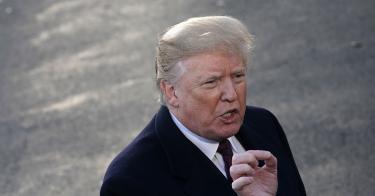None of the world’s truly bad guys stays out the headlines for long. After keeping a relatively low profile for several months, Iran earlier this week found itself back in the news twice.
First came reports that U.S. National Security Adviser John Bolton asked the Pentagon last year for military options to respond to two Iranian-sponsored terrorist acts in Iraq.
Then came news of a failed Iranian missile launch. Iran claimed it was merely sending up a satellite, but U.S. officials said the failed launch was part of Iran’s effort to test and expand its ballistic missile weapons capability.
While Iran is back in the headlines now, it’s the months when it was out of the news that may tell us more about what the regime is up to.
Clearly, the Iranian regime did not see the changed policies of President Trump coming.
Iran got a sweetheart deal from the Obama administration to temporarily put its nuclear weapons program on hold. In addition, the Iranian regime watched President Obama draw and then ignore red lines in Syria, and pursue ambivalent policies in Syria and Iraq until ISIS erupted and could no longer be ignored.
And Iran saw President Obama soft-peddle the U.S. alliance with Israel, so that America might appear more even-handed in dealing the Palestinians.
Beyond the kinder, gentler treatment from America that it received from the Obama administration, the Iranian regime also received a grand new opportunity for meddling: the war in Yemen.
Yes, times were good for Tehran during the Obama years as it pursued its goal of expanding influence by destabilizing the rest of its region.
Then President Trump ruined the party.
Once in office, President Trump began systematically turning around U.S. policy. And, make no mistake, this was all Trump. The strategy to put Iran back in its box started long before long-time Iran skeptics like Bolton joined his administration and before Pompeo moved from his job as CIA director to head the State Department.
The White House laid out a new approach for dealing with Tehran in the 2017 National Security Strategy and has followed it to the letter ever since. Pompeo’s recent Cairo speech simply reaffirmed that the administration sees Iran as chief troublemaker in the greater Middle East.
President Trump’s strategy has made the mullahs miserable. The U.S. withdrawal from Obama’s nuclear deal has dealt a series of hammer blows to Iran’s economy. Even Tehran admits the new U.S. sanctions are hitting hard.
At the same time, anti-regime protests and strikes continue throughout the country. Iran is also getting multinational pushback on every front from funding the Houthi rebels in Yemen to supporting Shiite militias in Iraq.
The Iranian government, while unhappy, remains as obstreperous as ever. Iranian Foreign Mohammad Javad Zarif recently went after Poland for agreeing to host a “U.S. anti-Iran conference” in February.
And the mullahs who rule Iran continue to play hostage diplomacy. An American citizen with a valid Iranian visa disappeared in July. Later, he reappeared – inexplicably in an Iranian prison –the fourth American now being held by the regime.
Tehran also continues to arm and supply Hamas, Hezbollah, the Houthi rebels, and Shiite militias in Iraq. Further afield, it keeps plotting terrorist attacks in Europe.
Yet, while Iran sticks to its usual bad habits, it hasn’t tried anything bold – like trying to close the Straits of Hormuz. Nor has the regime gone directly after U.S. forces in Iraq and Syria.
And while Iran’s nuclear chief has announced plans to start designing a new nuclear enrichment process, the regime has not – so far as we know – actually increased nuclear enrichment. It still allows International Atomic Energy Agency inspectors into the country.
For now, it looks like Iran’s plan is to take former Obama Secretary of State John Kerry’s advice and just wait Trump out. The mullahs hope is that in two years they will get a new U.S. president who will drop the sanctions and beg to re-up Obama’s nuclear deal.
Tehran is also watching closely to see how North Korean dictator Kim Jong Un handles Trump. If Kim can wrangle a sweetheart deal and keep his nukes, then the Iranian regime may reason: worst case scenario, Trump is re-elected, we’ll follow Kim’s playbook and shoot for a similar arrangement in the future.
Meanwhile, we can expect Iran to keep probing for weakness and advantage – without provoking the kind of escalatory confrontation with the West that would put Iran in a real bind. And so the Iranians will press the Europeans, make trouble in their region, name-call – and wait and see.
Yet while pursuing these foreign initiatives, the Iranian government must also somehow weather domestic opposition, a weak economy and an inevitable change in leadership after Iranian Supreme Leader Grand Ayatollah Sayyid Ali Hosseini Khamenei, 79, goes to the great beyond.
Perhaps none of this will go well for the mullahs. What if Trump gets re-elected, North Korea has to denuclearize, and Iran’s economy and influence continue to ebb?
It’s not out of the question. Too bad for the mullahs.
This piece originally appeared in Fox News




